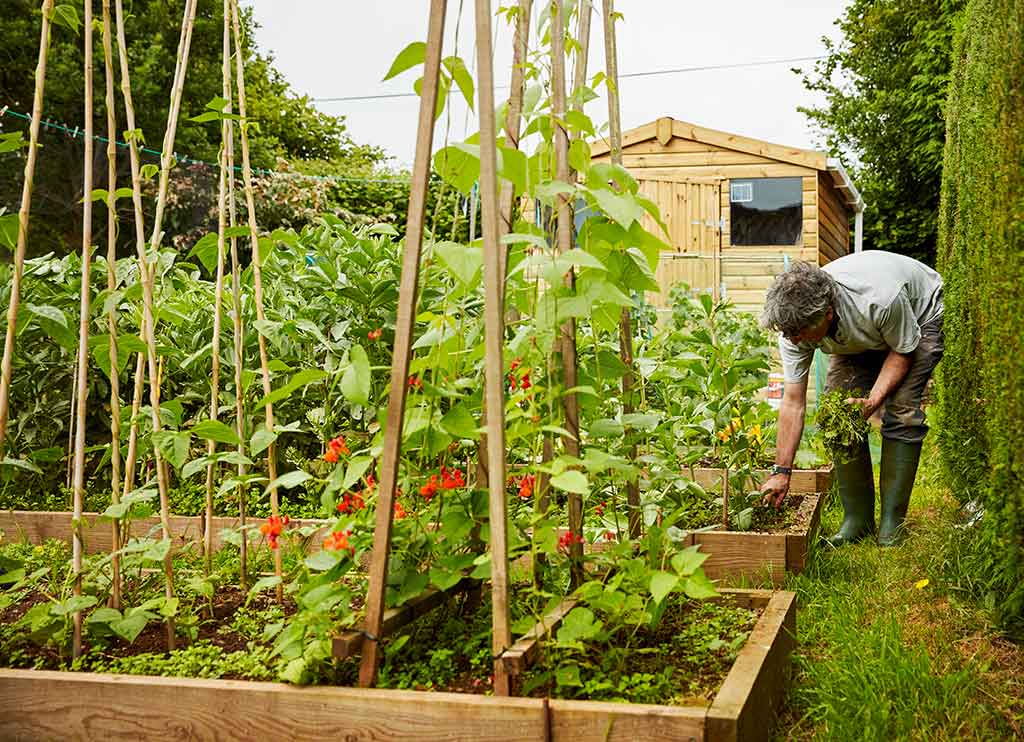
Building A Shed Without Planning Permission
When it comes to building a shed in your backyard, one of the most important factors to consider is whether or not you need planning permission. Planning permission is required for most new buildings, and sheds are no exception.
However, in some cases, you can build a shed without planning permission, as long as you meet certain requirements. In this article, we’ll look at how big you can build a shed without planning permission in the UK, as well as other important considerations to keep in mind.
We have structured this article in a questions and answer format, as these are the most common questions in the Uk when it comes to building a shed without planning permission.
Do I Need Planning Permission to Build a Shed?
In most cases, you will need planning permission to build a shed in the UK. However, there are some exceptions. If your shed meets certain criteria, you may be able to build it without planning permission.

How Big Can I Build a Shed Without Planning Permission?
The size of shed you can build without planning permission depends on a number of factors, including its location and use. In general, you can build a shed without planning permission if it meets the following criteria:
- The shed is single-storey
- The shed has a maximum eaves height of 2.5m
- The shed has a maximum overall height of 4m for a dual-pitched roof, or 3m for any other type of roof
- The shed does not cover more than half of the total area of land around the original house
- The shed is not used for business purposes
Garden sheds like these fall under the criteria of permitted development outbuildings in the UK.
It’s important to note that these rules only apply to sheds that are not located in a conservation area or World Heritage Site. If your shed is located in one of these areas, you will need planning permission regardless of its size.
You should check all these criteria with your local planning authority as laws do vary in different parts of the UK
What are the Height Restrictions for Sheds Without Planning Permission?
As mentioned above, sheds built without planning permission must have a maximum eaves height of 2.5m and a maximum overall height of 4m for a dual-pitched roof, or 3m for any other type of roof. These restrictions are designed to ensure that sheds do not become too dominant or imposing in the surrounding area.

Useful Resources:
- Buying a woodland for sale with a cabin
- Finding a smallholding for sale
- Smallholdings for sale in Wales
What are the Distance Requirements for Sheds Without Planning Permission?
If you’re building a shed without planning permission, you will also need to ensure that it is located a certain distance away from your property boundaries. The exact distance requirements vary depending on the size and type of shed you’re building, as well as your location.
In general, sheds must be located at least 2m away from any boundary if the eaves height is under 2.5m, and at least 2.5m away from any boundary if the eaves height is over 2.5m. If your shed has a flat roof, it must be located at least 1m away from any boundary.
It’s important to note that these distance requirements only apply to sheds that are not located in a conservation area or World Heritage Site. If your shed is located in one of these areas, you will need planning permission regardless of its size or location.

What Materials Can I Use to Build a Shed Without Planning Permission?
In general, you can use any materials you like to build a shed without planning permission, as long as they are in keeping with the surrounding area. However, if you live in a conservation area or World Heritage Site, you may be restricted in terms of the materials you can use.
It’s also important to ensure that your shed is built to a high standard and is safe and secure. This may mean using more expensive materials or hiring a professional builder to ensure that the shed meets all relevant building regulations.
Can I Install Electricity or Plumbing in a Shed Without Planning Permission?
You can install electricity or plumbing in a shed without planning permission, as long as the work is carried out by a qualified electrician or plumber and meets all relevant building regulations. However, if you’re planning to use the shed for business purposes, you may need to apply for planning permission and obtain any necessary permits or licenses.
Can I Use My Shed for Business Purposes Without Planning Permission?
In general, you cannot use a shed for business purposes without planning permission. However, there are some exceptions, such as if you’re using the shed for a home-based business that doesn’t generate a lot of traffic or noise.
If you’re planning to use your shed for business purposes, you will need to check with your local council or planning authority to see if you need planning permission and what other requirements you need to meet.

What Other Factors Should I Consider Before Building a Shed Without Planning Permission?
Before you start building a shed without planning permission, there are a number of other factors you should consider. These include:
- The impact the shed will have on your neighbours and the surrounding area
- The materials and design of the shed
- The quality of the workmanship and whether the shed meets all relevant building regulations
- Whether you need to obtain any permits or licenses for the shed
- Whether the shed will be safe and secure
How Do I Apply for Planning Permission if I Need It?
If you need planning permission for your shed, you can apply to your local council list or planning authority. The application process can be quite complex, so it’s a good idea to seek professional advice or assistance if you’re not familiar with the process.
You will need to submit detailed plans and specifications for your shed, as well as pay an application fee. The council or planning authority will then assess your application and may request further information or changes before granting permission.
How Long Does it Take to Get Planning Permission For A Shed?
The time it takes to get planning permission can vary depending on a number of factors, such as the complexity of your application and the workload of your local council or planning authority.
You should allow 8 weeks for your planning application to be processed, although it can sometimes take longer. It’s a good idea to check with your local council or planning authority for their specific processing times.

Conclusion: Building Your Garden Shed
Building a shed without planning permission can be a great way to add extra storage or workspace to your property without the hassle of applying for planning permission. However, it’s important to ensure that your shed meets all relevant size and location requirements, is built to a high standard, and does not have a negative impact on your neighbours or the surrounding area.
If you’re unsure whether you need planning permission for your shed, or if you have any other questions or concerns, it’s always a good idea to seek professional advice from a qualified builder or planning consultant.
Common Garden Shed Questions
Can I build a shed in my front garden without planning permission?
It depends on the size and location of the shed, as well as your local council's regulations. In general, sheds in front gardens are more likely to require planning permission.
Can I build a shed on a slope without planning permission?
Yes, you can build a shed on a slope without planning permission as long as it meets all relevant size and location requirements and is built to a high standard.
Do I need to obtain any permits or licenses to build a shed without planning permission?
No, you do not need to obtain any permits or licenses to build a shed without planning permission, unless you plan to use the shed for business purposes.
Can I build a shed with a flat roof without planning permission?
Yes, you can build a shed with a flat roof without planning permission as long as it meets all relevant size and location requirements.
Can I build a shed next to my neighbour's fence without planning permission?
You can build a shed next to your neighbour's fence without planning permission as long as it meets all relevant size and location requirements and is located at least 2m away from the boundary.

